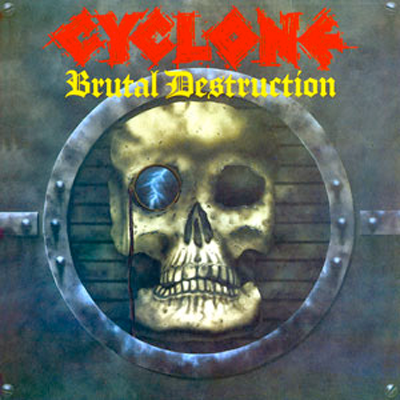
STAHLMANN, Adamant (2013, AFM)
The skull:
The concept of a crazy clockwork skull is not a bad one, but the execution of the concept here is simply beyond the pale. It doesn’t look like metal so much as cheap, silvered plastic, and there’s a jarring disconnect between the overly detailed gears and the astoundingly undetailed… other parts. It looks like a prototype of an accessory to go with an unlicensed action figure tie-in toy for a movie that wasn’t even released in your country. I do like the monocle, though.
The music:
Apparently this sort of corny electronic pop metal, which originated with Rammstein, is called Neue Deutsche Härte, which translates roughly to “New Wave Of German Young Adult Vampire Movie End Credit Metal.” At least, it’s close to that. Stahlmann itself means “Steel Man,” which maybe doesn’t sound as impossibly stupid to German speakers, and “Adamant” means, as you’d expect, “Adam Ant,” whose New Romantic stylings were clearly very influential on this group of facepainters. Anyway, the music sounds like a way less edgy Rammstein, full of disco beats, braindead non-riffs, and overenunciated German lyrics about steely men of iron, probably. This is atrocious stuff that is so slimily, transparently engineered to part pimply, kohled teenagers from their allowance money that it makes me embarrassed for the band to hear it, and the sooner this sort of thing becomes a universal punchline to jokes about the 00s, the better.
— Friar Johnsen
